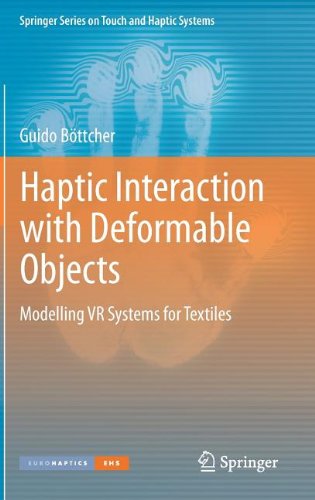

Most ebook files are in PDF format, so you can easily read them using various software such as Foxit Reader or directly on the Google Chrome browser.
Some ebook files are released by publishers in other formats such as .awz, .mobi, .epub, .fb2, etc. You may need to install specific software to read these formats on mobile/PC, such as Calibre.
Please read the tutorial at this link: https://ebookbell.com/faq
We offer FREE conversion to the popular formats you request; however, this may take some time. Therefore, right after payment, please email us, and we will try to provide the service as quickly as possible.
For some exceptional file formats or broken links (if any), please refrain from opening any disputes. Instead, email us first, and we will try to assist within a maximum of 6 hours.
EbookBell Team

5.0
58 reviewsThe focus from most Virtual Reality (VR) systems lies mainly on the visual immersion of the user. But the emphasis only on the visual perception is insufficient for some applications as the user is limited in his interactions within the VR.
Therefore the textbook presents the principles and theoretical background to develop a VR system that is able to create a link between physical simulations and haptic rendering which requires update rates of 1\,kHz for the force feedback. Special attention is given to the modeling and computation of contact forces in a two-finger grasp of textiles. Addressing further the perception of small scale surface properties like roughness, novel algorithms are presented that are not only able to consider the highly dynamic behaviour of textiles but also capable of
computing the small forces needed for the tactile rendering at the contact point.
Final analysis of the entire VR system is being made showing the problems and the solutions found in the work.